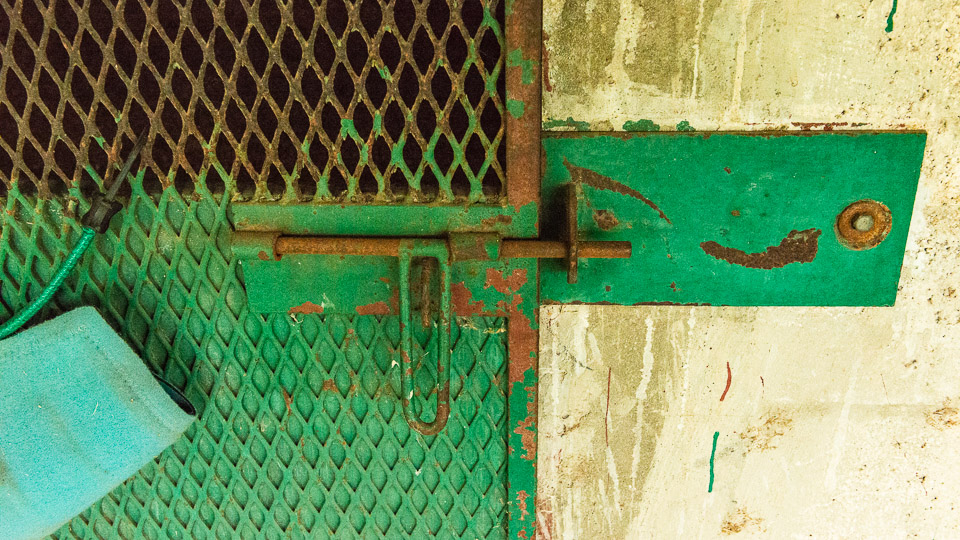
Horse Barn Structures – Stall Doors And Latches
There are so many varieties but I might be able to categorize stall doors into groups: swinging in, swinging out and sliding. All have advantages and disadvantages. Latches are too numerous but again fall into two camps for me: safe and unsafe. I guess there are two other types: effective and not effective. I have seen all kinds of combinations and many are in this gallery.
**CONTINUED IN ARTICLE TAB**
Related material – Sometimes I have a lot of material here that I have written, podcasted, video blogs and other things. They will be listed in this tab.
Use the browser back button or menu to return to the index of topics.
⬇︎ CLICK ANY IMAGE BELOW TO REVEAL MORE INFORMATION ⬇︎
There are so many varieties but I might be able to categorize stall doors into groups: swinging in, swinging out and sliding. All have advantages and disadvantages. Latches are too numerous but again fall into two camps for me: safe and unsafe. I guess there are two other types: effective and not effective. I have seen all kinds of combinations and many are in this gallery.
Stall doors that swing in are seen in barns with a narrow aisle down the middle. There isn’t enough space to allow the gate to swing out. When a gate swings in it covers the buckets hanging on the inside wall, forcing the person to open, enter, close just to get to any bucket. it also forces the horse to move backwards to gain access to their head and it becomes difficult for someone to escape if needed. The main obstacle to escaping is that the door stops at the door entrance blocked from continuing further to the outside. You become trapped. This also makes the horse escaping more difficult or impossible if a latch is left open.
Stall doors that swing to the outside of the stall and into the aisle offer better access to the horse and the buckets inside the stall. If a quick escape is needed the door will swing out for a wider opening. The aisle is blocked unless the stall door is closed and this requires maneuvering the horse a bit after exiting the stall to return to the door and swing it closed. If the door is left open and there is a strong wind, the door can slam open or closed damaging the door and possibly injuring someone.
Sliding doors are the best solution but they also have drawbacks. First they are expensive. They require maintenance including lubricating the rollers and adjusting the rollers to align the latch. Nothing can be placed in the path of the rolling door limiting the placement of tack trunks, hanging hooks and other things. If lightning rod protection is added, every roller rail needs to be tied to the grounding rod. And lastly, you can fling the sliding open if someone is standing in the glide path especially if their hands are placed in the way. I accidentally injured a groom’s hand this way so always look before you open.
Tip – If a sliding door has dropped over time and the latch no longer aligns or the door just gets stuck, there is an easy 1-person way to adjust it. The door is too heavy to lift and the nuts on the hanger too tight to move under the door’s weight. Simply place the tip of a shovel under the bottom of the door. Place one foot on the shovel handle and put your weight on it. The lever fulcrum at the back of the shovel head will pivot as the handle moves towards the ground and the tip of the shovel head will easily lift the door. Just reach up and with your fingers, turn the nut now loose from the pressure released from the weight. 2 or 3 turns and then take your foot off the handle and check your work. Simple! If you don’t have a shovel find a similar thing to use. Be careful and don’t fall. If you are short, have a friend turn the nuts while you raise the door.
A simple and automatic stall door latch system.
- Additional tables
- Links to other in house articles
- Links to outside articles
- Reference material used in developing this topic.
There are no related articles here if you don’t see linked items.


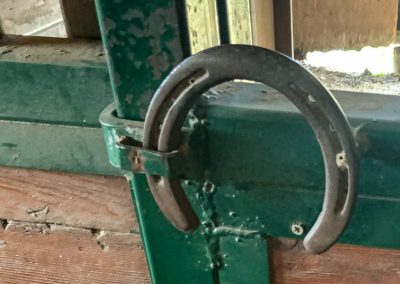
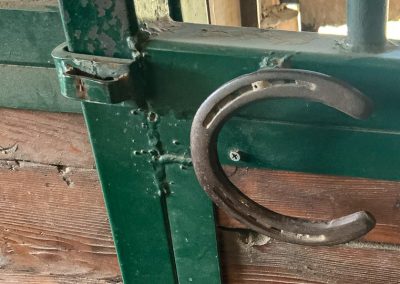
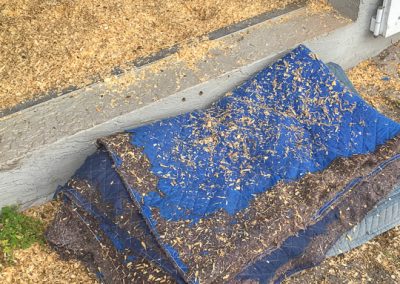
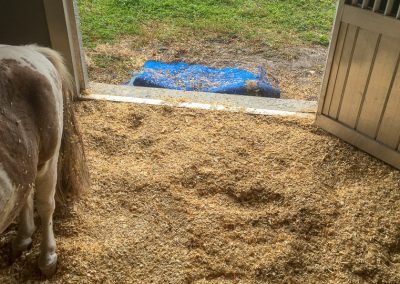
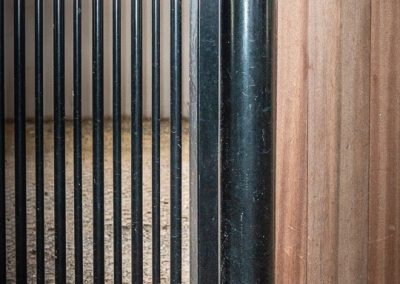

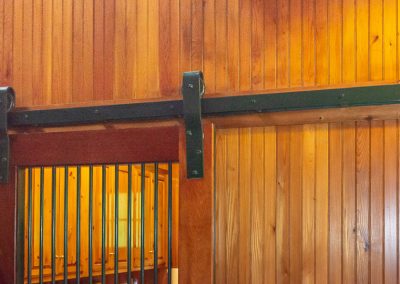
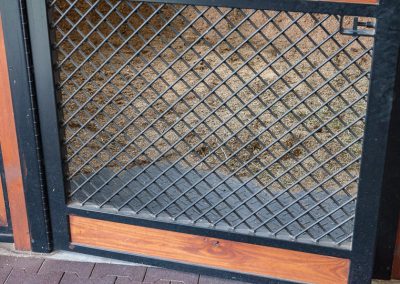
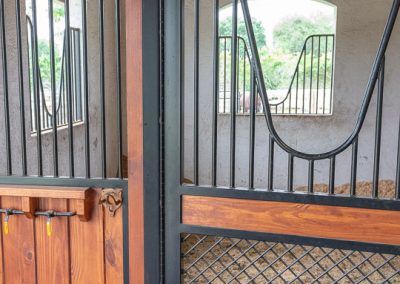

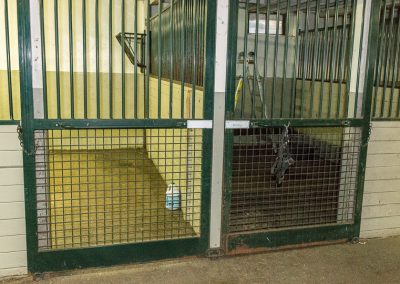
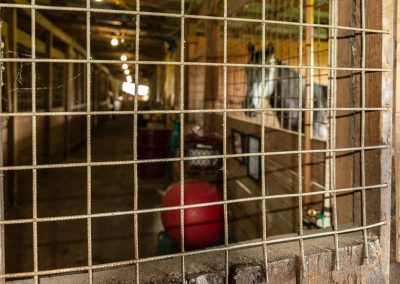

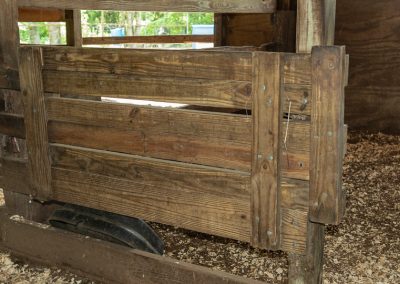
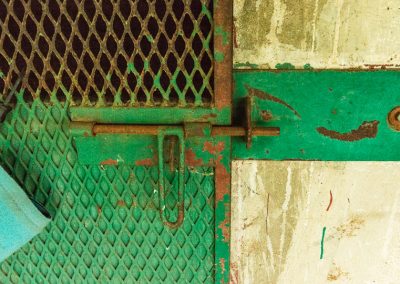

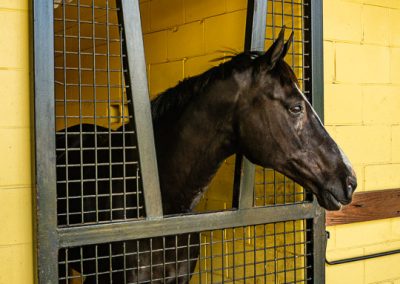

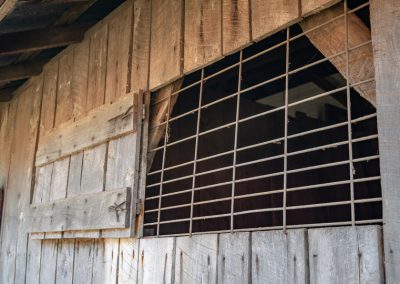
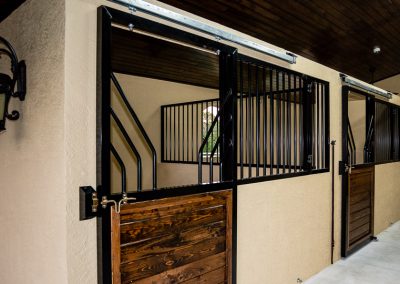

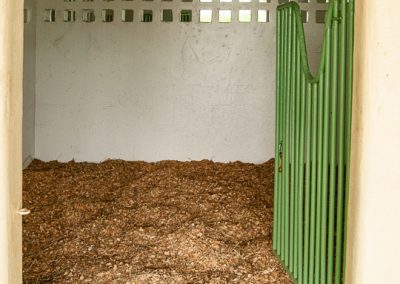

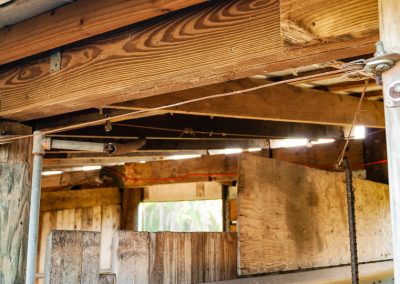
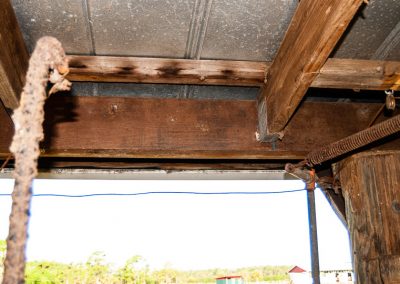
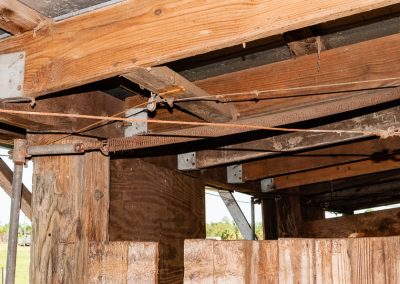


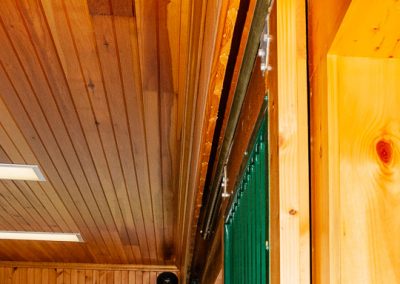

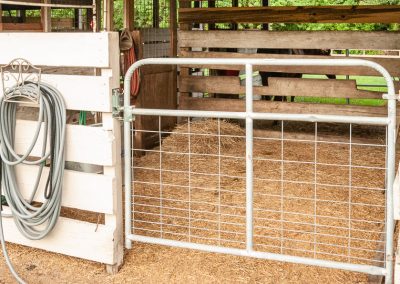
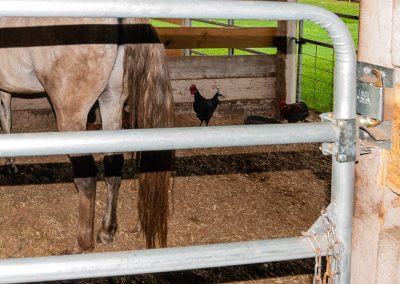

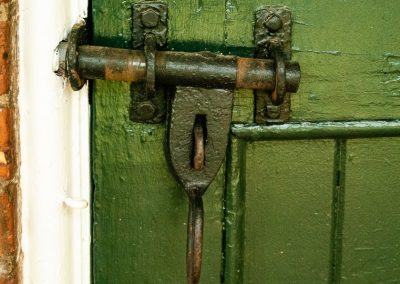
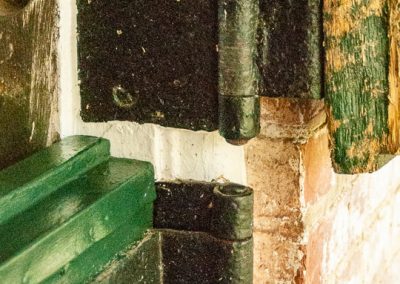
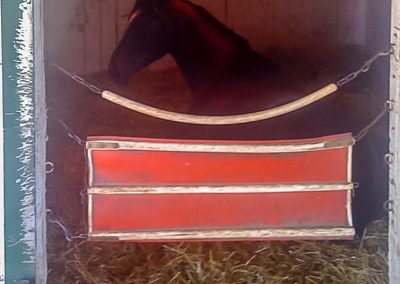

Responses